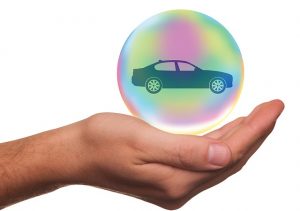Insurers are Using Humorous Commercials to Attract New Customers

Insurance commercials began years and years ago, and they almost all looked the same. To say they were boring would be a serious understatement. The formula was too predictable. Happy families gathered in joy as they looked at their insurance plan. The correct choice was always selected, and everybody seemed content. A voice-over narrative then talked about how important it is to make the right choice when it comes to accidents, fires, floods, and the like.
The commercials back then tried to remind us that things can go wrong at any second. Burglaries or natural disasters can happen, so it’s best to be cautious and get everything you own insured. Insurance agents would appear on television and talk about how important it is to secure coverage so that they can be totally prepared when the unexpected occurs.
Insurance Ads have Changed Drastically in Recent Years
In most cases, it seemed like all insurance ads were made to make you feel somber and solemn. The formula worked for decades until Geico came along and shook up the entire industry. Nowadays, almost all insurance companies aim for humor and this can be largely credited to Geico.
Think of Progressive’s Flo or the Mayhem character from the Allstate commercials. They all want to get a laugh out of you so that they create a memorable experience that encourages you to buy more insurance. These ads create feelings that consumers remember when they shop for auto or home insurance.
They also create a big business. The biggest proprietor of the shift from somber to humorous is Geico. According to https://youngamericainsurance.net Geico is now the second largest automobile insurer in the United States, just behind State Farm. Just 20 years ago nobody would have believed that Geico could ever overtake Allstate, but they did it. They developed clever marketing and commercials that have an almost cult feeling. They also came up with the famous quote, “Switching to Geico can save you 15% or more on car insurance?” That got people curious and applying for quotes by the millions to see if it was true.
The nature of these commercial changes came when producers wanted clients to associate their brand with a smile. Nobody wants to be fed depressing insurance commercials all day long, as that doesn’t exactly inspire people to buy any coverage. However, as Geico has discovered, people want their ads to reflect a sense of happiness and even craziness.
Other Insurance Companies Have Followed Geico’s Lead
Since Geico was the first to make this advertisement change, other carriers were soon to follow. Allstate was another company to shift from making somber to funny commercials quickly. They realized that customers view insurance as a burden, and they don’t want to think about the costs associated with it. So, they started making more emotional insurance commercials. This included using imagery and characters that would make the brand more relatable and fun.
That’s when the Mayhem character was born. Today’s audience is younger and needs something exciting to relate to. Mayhem makes them laugh and creates identifiable experiences that put the need for car insurance into a whole new perspective. Insurance now has its own voice in the comedy world. Humor connects with people across all generations, lifestyles, and various financial levels. The humor comes first in the most popular commercials, and then the cost of insurance comes later on.
However, that doesn’t mean just any kind of humor will work. The funny content still requires a bit of care and concern, at least according to David Fowler of Ogilvy & Mather. The pitch is still the most important piece to the insurance commercial puzzle. While the content should be funny, it shouldn’t be the only thing that the audience takes away from the ad. They are in the business of selling insurance, after all, and that is still the main idea that is focused on.
Having a Solid Marketing Strategy is Key
For example, a company will never make light of a car accident in a commercial. They might direct humor towards the customer service department or a character who is responsible for causing “mayhem” to different drivers. But it shouldn’t be overly goofy. Marketing strategy plays a key role when it comes to the development and success of a humor-based insurance commercial ad.
Mr. Fowler doesn’t want the audience to forget that insurance is still a serious thing. It’s a product that is essentially required by almost everyone, across the board. There still needs to be a point to the humor, directing mindsets towards the increased desire to buy car insurance with no down payment. If you’re too goofy, then customers will be afraid to purchase insurance from you. They just won’t trust the message.
In essence, make sure that everything stays in context. That’s the difference between an unsuccessful insurance ad and a successful one. Companies know how to categorize their ads to appeal to the widest audience, using humor, while still staying on the topic of the pitch. The ads should be funny, but the intentions should be honest. Attention-grabbing commercials that also add a touch of humor will be the true winners in the years to come.






